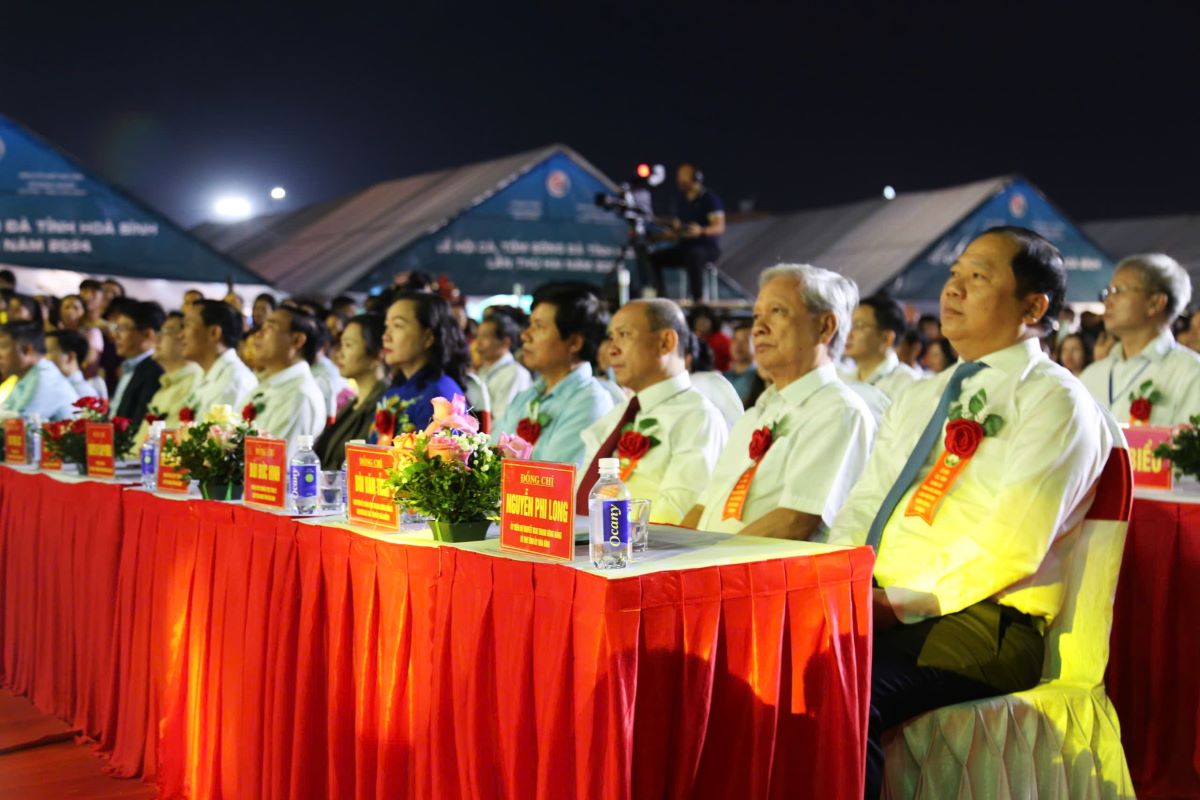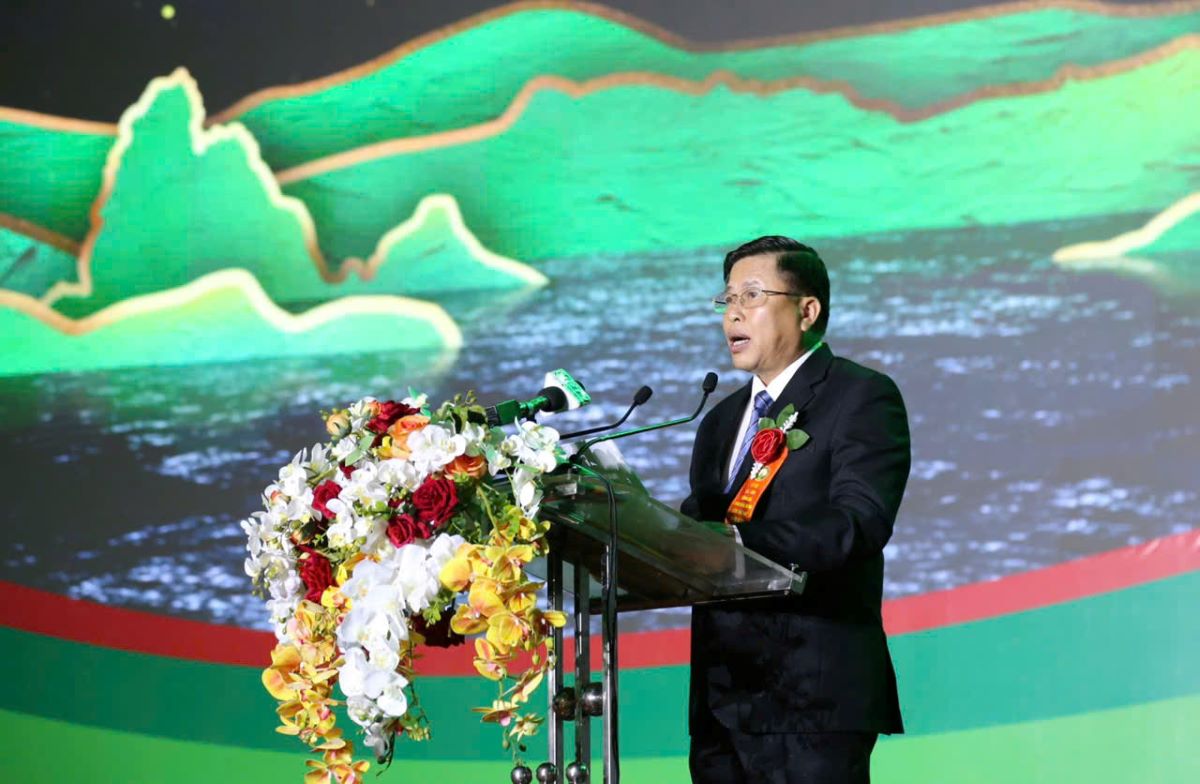
The 2nd Da River Fish and Shrimp Festival took place in the northern province of Hoa Binh from November 19-23. Present at the opening ceremony of the festival were Secretary of the provincial Party Committee Nguyen Phi Long, Deputy Minister of Agriculture and Rural Development Nguyen Quoc Tri, Chairman of the provincial People's Council Bui Duc Hinh, and Chairman of the provincial People's Committee Bui Van Khanh, among others.

Delegates to the opening of the 2nd
Da River Fish and Shrimp Festival 2024.
Speaking at the event, Vice Chairman of the provincial People's Committee Dinh
Cong Su emphasised that the festival aims to promote aquaculture and products
of Da River, especially its fish and shrimp.
The festival also introduces strengths, landscape, and
traditional cultural identity of Hoa Binh province in general, the Da River
basin area in particular, contributing to stimulating local tourism
development, he added.
Hoa Binh Lake is now the largest man-made resevoir in Southeast
Asia. Localities in the province have been promoting the development of cage
fish farming in the area, Now, the province has 2,695 ha of fish farming, with
nearly 5,000 cages and output of about 12,500 tonnes.
Da River fish and shrimp are famous across the country, creating
a great source of income for both local residents and enterprises.

Vice Chairman of the provincial People's Committee Dinh Cong Su speaks at the opening ceremony of the festival.
The Hoa Binh Lake Tourism Area is one of 12 national tourist
areas approved by the Prime Minister, with such advantages as the rich culture
of ethnic groups, particular the Muong people, diverse cuisine, various local
products, along with resorts and tourist attractions. Hoa Binh province has
optimised its potential, increased income for locals, and created a stable and
sustainable source of revenue for the local economy.
The festival featured nearly 130 booths from localities and
departments, showcasing the province's signature products. Within its
framework, there were activities like a fishing competition and fish releases
to restore aquatic resources in Hoa Binh Lake.
In Lac Thuy district, communes have been succeeded in promoting their One Commune-One Product (OCOP) products while others are still struggling to position their typical farming products in market. Some communes in the district still fail to have their products met OCOP programme’s requirements, while others have seen their certifications expired.
The inspectorate agency of Hoa Binh province has issued Official Dispatch No. 1090/TTr-PCTN to provincial departments, agencies, localities, business associations, enterprises, and investors regarding measures to improve informal component indexes of the Provincial Competitiveness Index (PCI).
Hoa Binh is taking concrete steps to improve its investment environment, with a strong focus on supporting businesses, settling obstacles for strategic investors, and creating opportunities for robust development in the coming years.
Under the blazing early summer sun, the construction site of Nhuan Trach Industrial Park (IP) in Luong Son district is abuzz with activities from dawn to dusk, a testament to the determination of the investor to meet their construction targets on schedule.




